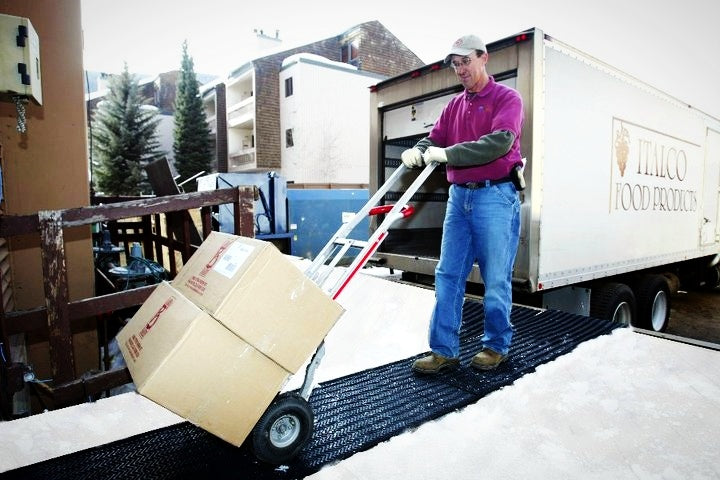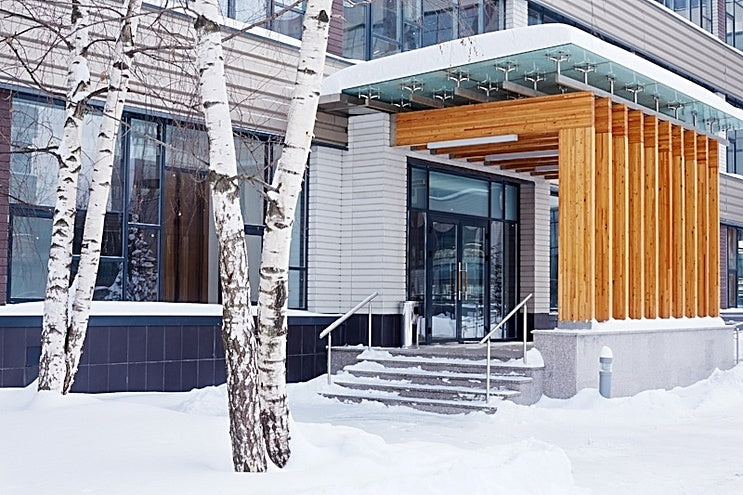Depending upon the region, severe winter weather conditions are an inevitability to which some facilities and business entities are able to respond by temporarily shutting down. However, for many businesses and facilities, closing the doors when the weather becomes adverse is simply not an option.
When needing to keep the doors open during severe weather, the safety of employees and the public should be primary considerations. With winter weather comes hazards like wet floors and ice buildup that can contribute to slip-and-fall accidents, which potentially could cost a business many thousands of dollars.
Maintaining the proper functioning of a business or facility during severe weather, as well as ensuring the utmost safety of employees and customers, requires planning and preparation. This post offers some specific, actionable tips for keeping your business open and safe during severe winter weather.
Train Employees on Winter Safety
Proper preparedness of employees for adverse weather conditions is crucial both when it comes to their safety and to the wellbeing and optimal functioning of your business. Consider the following when training employees for severe weather conditions:
Make sure employees are aware of your adverse weather policy
Having a clear adverse weather policy as part of your employee training program, and reviewing it as necessary, will ensure that your business or facility is properly staffed during inclement weather.
As well, making sure that there is a system in place for employee notification during winter storms will provide clear expectations for attendance and staffing. It’s also worthwhile to identify backup personnel for critical aspects of your business so that operations can run seamlessly in the event of an absent employee due to weather conditions.
Train employees to monitor safety conditions
Review your facility’s potentially hazardous areas and train employees to identify unsafe situations during severe weather, such as ice gathering on rain gutters or walkways. Remind employees that keeping a vigilant watch during winter storms protects not only themselves but one another and the public, as well.
Safety-condition training should also include addressing employees’ ability to monitor themselves and one another for adverse reactions to cold conditions such as hypothermia, which can present as confusion and disorientation. As well, cold extremities can be less sensitive and therefore more prone to potential injury by machinery or equipment. Employees should be encouraged to not only maintain appropriate body temperatures as much as possible but also to increase their awareness of their physical wellbeing.
Require proper employee attire
Review proper attire for cold, wet weather and severe conditions with your employees. This should include clothing that they can execute their duties while maintaining acceptable temperatures, as well as safe and appropriate footwear with tread to guard against slips and falls.
Preparing your facility for severe weather
While making sure your business is properly staffed and employees are safe are crucial to keeping your doors open during winter storms, it’s equally important to ensure that your facility is safe for everyone both inside and out. Consider the following areas to address when preparing for adverse weather:
Make sure heating is intact
Periodic maintenance checks of your facility or building’s heating system will help head off any potential mishaps that could lead to the need to shut down during extremely cold temperatures.
Have backup methods for power outages
To ensure that your business continues to run efficiently during severe weather, be sure to have batteries and or generators for keeping critical equipment running. When considering “backup” for your business during extreme conditions, you should also take into consideration backing up any data or information that could be lost in the event of a power outage.
Inspect parking lots and driveways
Inspect your facility’s exterior for cracks and holes that could potentially gather ice and contribute to a slip or fall. Because they are usually black, parking lots and driveways can be particularly hazardous areas due to the potential for ice to go unnoticed.
Also be sure to inspect your building’s safety features, such as handrails for stability and durability, in preparation for winter storms. Ensuring proper lighting outside your facility will also help identify potentially hazardous situations. As most slips and falls take place outside, it’s extremely important to pay close attention to your building’s exterior.
Clear ice from entrances and exits
Clearing ice as soon as possible from entrances and exits will cut down on the potential for accidents in these areas. Utilizing safety cones and signs around potentially hazardous areas will also help keep customers and employees aware and informed, and could protect both their physical safety and your business legally.
Maintain floor safety around entrances
As snow and ice are tracked indoors, wet floors become a significant safety hazard during severe weather. Increasing the number of floor mats as well as having a system in place to dry up any pooled water as soon as possible will help protect these areas from mishaps.
Prepare for snow removal in advance
Having a clearly defined snow removal procedure in place well in advance of severe weather will help ensure that a business’ doors stay open and that safety is maintained during winter weather. Some options for snow removal include:
- Shoveling -- This likely is not a realistic procedure for a large building or facility, and many businesses don’t designate an employee for this type of task.
- Salt -- This option can assist with safety in parking lots and sidewalks, however, it may not be an ideal option for entrances due to the damage salt can cause to flooring.
- Heated floor mats -- These are an option that not only will melt away existing snow and ice, but the constant temperature heated mats maintain will keep more precipitation from accumulating.
When it comes to maintaining the safety of your business, employees, and customers during severe weather, prevention and preparation are top priorities. Allowing time for properly preparing your facility and employees will ensure not only a safe winter but an operational one, as well.


